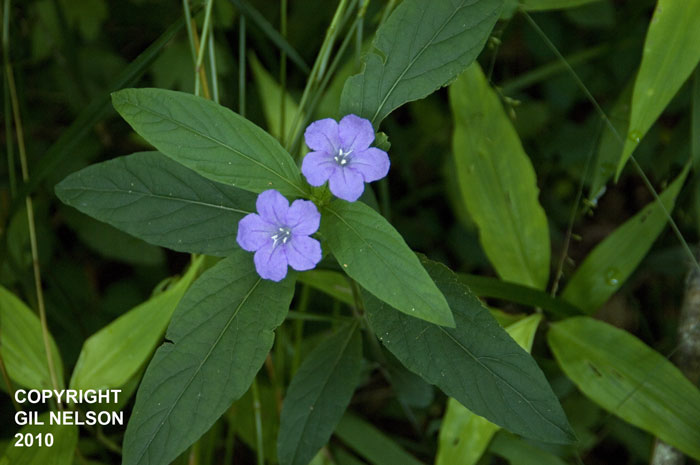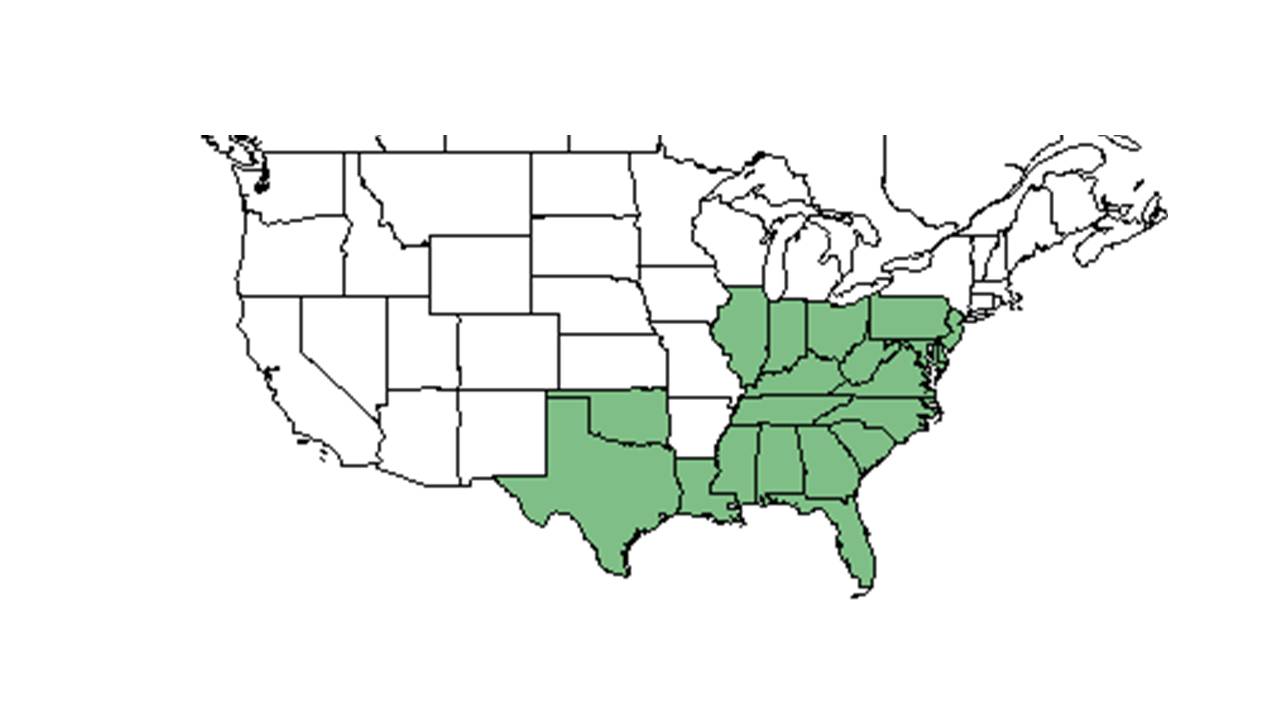Ruellia caroliniensis
| Ruellia caroliniensis | |
|---|---|

| |
| Photo taken by Gil Nelson | |
| Scientific classification | |
| Kingdom: | Plantae |
| Division: | Magnoliophyta – Flowering plants |
| Class: | Magnoliopsida – Dicotyledons |
| Order: | Scrophulariales |
| Family: | Acanthaceae |
| Genus: | Ruellia |
| Species: | R. caroliniensis |
| Binomial name | |
| Ruellia caroliniensis (J.F. Gmel.) Steud. | |

| |
| Natural range of Ruellia caroliniensis from USDA NRCS Plants Database. | |
Common name: Carolina wild petunia
Contents
Taxonomic notes
Description
“Is a smaller, less upright perennial varying from 31 to 52 cm tall, depending on growing conditions. Bluish-purple flowers occur in early spring and extend into late summer. Leaves are oval, 6.7 to 7.5 cm long. Flowers are succeeded by seed capsules 0.4 cm wide x 1.3 cm long with brown seeds, 2.5 mm wide. Each R. caroliniensis capsule contained an average of 5.2 seeds” (Wilson et al 2004). “Highest germination was achieved at 30/20 degree Celsius in light” (Wilson et al 2004).
Distribution
R. caroliniensis is widespread throughout Florida, occurring in varied habitats including sandhills, flatwoods and hammocks (Wunderlin and Hansen, 2003).”- Wilson et al. 2004. Is considered an indicator species of reference in longleaf pine sites in southwestern Georgia. Ruellia caroliniensis was among our list of vulnerable species (Kirkman 2004).
Ecology
Habitat
In the Coastal Plain in Florida and Georgia, R. caroliniensis can be found in the edges of wooded floodplains, mesic hardwood floodplains, drying sand of open woodlands, flatwoods, sandy alluvial banks, shallow marshes, and on bluffs along the Apalachicola River (FSU Herbarium). Soils include sandy loams, sand, and loamy sand (FSU Herbarium). Associated species include oak, hickory, dogwood, pine, juniper and Magnolia (FSU Herbarium).
Phenology
Flowers in August (FSU Herbarium).
Seed dispersal
Seed bank and germination
Fire ecology
R. caroliniensis was observed to resprout one month after a fire in July of 1993 (Pavon 1995).
Pollination
Use by animals
Diseases and parasites
Conservation and Management
Cultivation and restoration
Photo Gallery
References and notes
- Kirkman, L.K., K.L. Coffey, R.J. Mitchell, and E.B. Moser. 2004. Ground Cover Recovery Patterns and Life-History Traits: Implications for Restoration Obstacles and Opportunities in a Species-Rich Savanna. Journal of Ecology 92:409-421
- Wilson, Sandra B. and P. Chris Wilson. 2004. Growth and Development of the Native Ruellia caroliniensis and Invasive Ruellia tweediana. HortScience 39:1015-1019.
- Pavon, M. L. 1995. Diversity and response of ground cover arthropod communities to different seasonal burns in longleaf pine forests. Tallahassee, Florida A&M University.